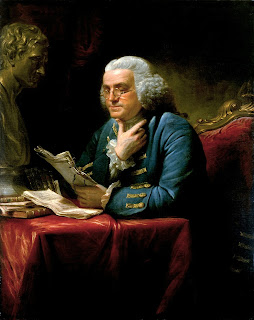The Role of Generative AI and its Impact
Generative AI the buzzword for the last 2 years is the capability to create new content, such as text, images, music, and even entire virtual environments, by learning from existing data. This technology is revolutionizing various industries, enhancing creativity, efficiency, and decision-making processes.
One of the key concepts we should about Generative AI is LLMs. Large Language Models (LLMs) are a type of AI model trained on vast amounts of text data to understand and generate human-like language. They play a crucial role in generative AI applications. Text-generating AI systems, such as the popular ChatGPT, are built on large language models (LLMs).
Some examples of models are given below.
OpenAI GPT-3/GPT-4: These models are capable of generating human-like text based on given prompts, used in chatbots, content creation, and more.
Google BERT: BERT (Bidirectional Encoder Representations from Transformers) is designed for natural language understanding and is used in search engines, chatbots, and language translation.
Microsoft Turing-NLG: This model is used for generating natural language, assisting in tasks like summarization, translation, and question-answering.
The text to text, text to image, image to video are some of the common uses of Generative AI. Here is a brief description of them with some of the applicable tools.
Text to Text - AI models that generate human-like text based on prompts, used in content creation, summarization, and translation. This is the most common use of Generative AI and OpenAI GPT-3/GPT-4, and Google BERT are examples.
Text to Image - AI tools that generate images from textual descriptions, useful in graphic design, marketing, and creative projects. Examples of tools are DALL-E, DeepArt, Midjourney.
Image to video - AI technologies that generate videos from images or image sequences, used in animation, video creation, and visual effects. Feedeo, Synthesia and Sora AI are some tools that are examples.
Text to Speech - AI systems that convert written text into spoken words, used in virtual assistants, audiobooks, and accessibility tools. Some tools are PlayHT, LOVO, and Speechify.
Now let's see what the major firms say could be the potential impact of Generative AI.
McKinsey research estimates that gen AI could add to the economy between $2.6 trillion and $4.4 trillion annually while increasing the impact of all artificial intelligence by 15 to 40 percent. https://www.mckinsey.com/industries/technology-media-and-telecommunications/our-insights/beyond-the-hype-capturing-the-potential-of-ai-and-gen-ai-in-tmt#
Goldman Sachs predicts that as tools using advances in natural language processing work their way into businesses and society, they could drive a 7% (or almost $7 trillion) increase in global GDP and lift productivity growth by 1.5 percentage points over a 10-year period.https://www.goldmansachs.com/intelligence/pages/generative-ai-could-raise-global-gdp-by-7-percent.html
Gartner predicts that by 2025, 30% of outbound marketing messages from large organizations will be synthetically generated, up from less than 2% in 2022. Text generators like GPT-3 can already be used to create marketing copy and personalized advertising.https://www.gartner.com/en/topics/generative-ai
“I can’t think of anything that’s been more powerful since the desktop computer.” said by Michael Carbin, Associate Professor, MIT, and Founding Advisor, MosaicML
Let's now look at some examples from industries that are being impacted by Generative AI.
Creative Industries - AI algorithms can write scripts, generate storylines, and compose music. OpenAI GPT-3, AIVA (AI music composition) are some of the tools used. This is what led Hollywood to strike to protect their livelihoods from generative AI. https://www.brookings.edu/articles/hollywood-writers-went-on-strike-to-protect-their-livelihoods-from-generative-ai-their-remarkable-victory-matters-for-all-workers/
In terms of design AI tools can also create visuals and assist in graphic design. DALL-E, DeepArt are some of the tools that can be used.
Personalization - AI-driven tools create personalized marketing campaigns. Some of the tools are Persado and Phrasee.
Medical field - AI analyzes medical images to detect diseases. Some tools are Google's DeepMind and Zebra Medical Vision. Some of the current uses of AI in this field include: Diagnosing Patients: AI algorithms analyze medical imaging data, such as X-rays, MRIs, and CT scans, to assist healthcare professionals in accurate and swift diagnoses.
Google employs AI to create personalized advertisements. By analyzing user data, AI generates ad content that resonates with individual preferences, increasing the effectiveness of ad campaigns.
As we all know Netflix uses AI algorithms to recommend movies and TV shows based on user viewing history and preferences.
Closer to home with direct impact to the IT industry GitHub Copilot uses generative AI to assist developers by suggesting code completions and generating code snippets. This tool helps streamline the coding process, allowing developers to focus on more complex and creative aspects of software development.
Conclusion
Generative AI is reshaping our world, enhancing creativity, personalization, and efficiency across various industries. As this technology continues to evolve, it can be a boon and bane. There is both excitement and fear at the same time. However, it is crucial to address ethical considerations, such as data privacy and algorithmic bias, to ensure the responsible development and deployment of AI technologies. This is what the technological leaders of big firms have also been suggesting. So the future of generative AI holds immense potential, promising to transform our lives in ways we have yet to imagine. There is so much more we need to learn about this field but one thing is sure the future needs us to be learning all the time while this technology continues evolving. I was listening to an interview of Sundar Pichai, CEO of Google and the interviewer asked him will we look at this after some years and laugh at how simple these developments are. He said yes and that is the whole purpose of technology is to keep relentlessly innovating so that we do make tomorrow better than today. I agree technology can be used to make our future better and hope that's what happens with Generative AI.
Thanks for reading this post. The views expressed here are my own and do not represent my organization.









Comments
Post a Comment